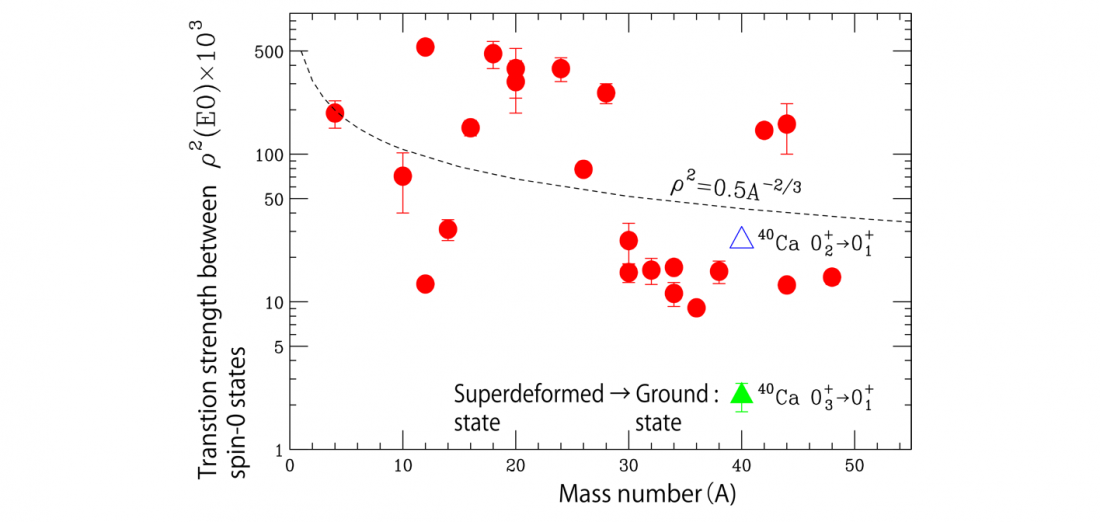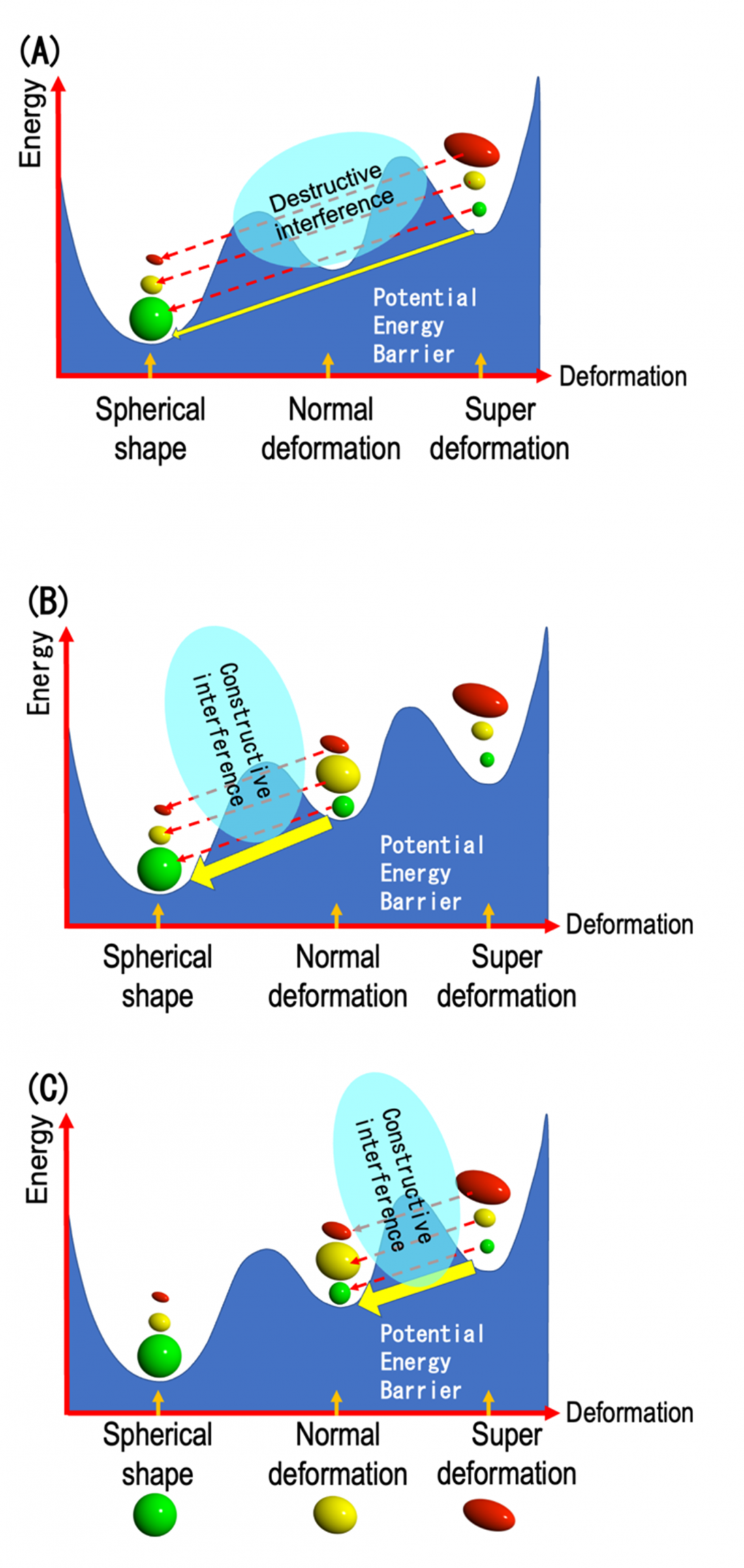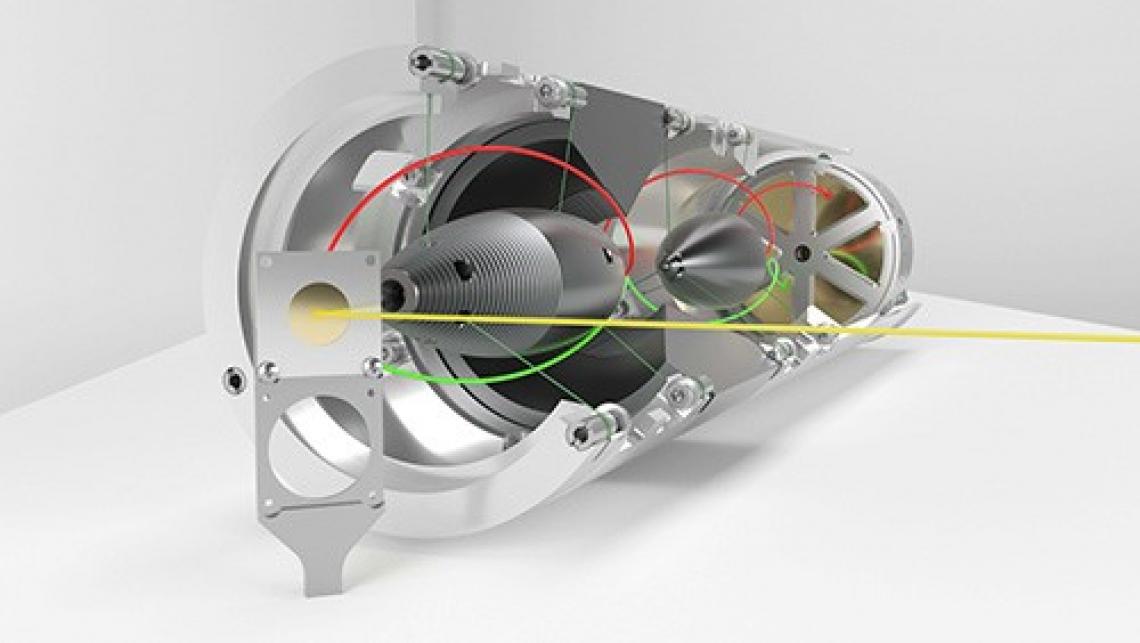Fig. 1 Transition strengths between spin-0 states for nuclei with atomic masses below 50. The green point shows the strength for the transition between the superdeformed state and the ground state of 40 Ca, which has the smallest value. The red points are experimental values, and the dashed line is a curve inversely proportional to the 2/3 power of the mass number A, showing the trend between the spin-0 states with respect to the mass.
An international team of researchers study the “doubly magic” calcium-40 nucleus, and find that transitions between the “superdeformed” state and the spherical ground state are suppressed by destructive interference, which may help explain nucleosynthesis
Osaka, Japan – Scientists from the Research Center for Nuclear Physics at Osaka University, in collaboration with the Australian National University, Japan Atomic Energy Agency, the University of Tokyo, and GIT AM University, used measurements from a calcium foil irradiated with protons to infer the transition strength between different nuclear configurations in calcium-40. They found that quantum interference made the transition from the elongated “superdeformed” state to a normal, spherical state much less likely than expected. This work may lead to a better understanding of how elements are formed in supernovae.
Fig. 2 Schematic diagram of three deformed states coexisting in the 40 Ca nucleus and electron-positron pair transitions. (A) Transition from the super-deformed state to the spherical ground state, (B) from the normal deformed state to the ground state, and (C) from the superdeformed state to the normal deformed state.
In nuclear physics, some isotopes are called “magic” because they contain exactly the right number of protons or neutrons to form a complete shell. The first few magic numbers are 2, 8, 20, 28, and 50. Calcium-40, the most abundant form of calcium, is considered “doubly magic” because it has 20 protons and 20 neutrons in its nucleus. As a result, this isotope is very stable. With magic nuclei, various shapes of the nucleus may have very similar energies, so that coexistence can occur. This represents the quantum superposition of more than one conformation of protons and neutrons at the same time. However, the decay mechanism of a nucleus in the “superdeformed” conformation, shaped like an elongated rugby ball, into the lowest-energy spherical shape has been a major mystery.
Now, the team of researchers has used measurements of electron and positron emission from decay transitions between different states of calcium-40 nuclei to clarify the mechanism. “We observed evidence that the decay from the superdeformed excited state to the spherical ground state is unexpectedly suppressed in a calcium-40 nucleus,” first author Eiji Ideguchi says. The team found that the transition strength between these states is so small because of destructive quantum interference between coexisting shape configurations of similar energies.
Now, the team of researchers has used measurements of electron and positron emission from decay transitions between different states of calcium-40 nuclei to clarify the mechanism. “We observed evidence that the decay from the superdeformed excited state to the spherical ground state is unexpectedly suppressed in a calcium-40 nucleus,” first author Eiji Ideguchi says. The team found that the transition strength between these states is so small because of destructive quantum interference between coexisting shape configurations of similar energies.
To collect experimental data, protons were fired at a calcium target, and the resulting electrons and positrons emitted from excited states were measured. “This work deepens our understanding of coexisting deformation states that are unique to nuclei,” senior author Tibor Kibédi says. This research may help scientists better understand the processes that give rise to the different elements in the Universe, as well as the remarkable stability of magic nuclei.
Fig. 3 Electron-positron pair spectrometer, Super-e. The yellow line in the figure shows the beam irradiation on the target. The electrons and positrons emitted from it (red and green lines) are guided to the Si detector located downstream.
###
The article, “Electric monopole transition from the superdeformed band in 40Ca” was published in Physical Review Letters at DOI: https://doi.org/10.1103/PhysRevLett.128.252501
About Osaka University
Osaka University was founded in 1931 as one of the seven imperial universities of Japan and is now one of Japan's leading comprehensive universities with a broad disciplinary spectrum. This strength is coupled with a singular drive for innovation that extends throughout the scientific process, from fundamental research to the creation of applied technology with positive economic impacts. Its commitment to innovation has been recognized in Japan and around the world, being named Japan's most innovative university in 2015 (Reuters 2015 Top 100) and one of the most innovative institutions in the world in 2017 (Innovative Universities and the Nature Index Innovation 2017). Now, Osaka University is leveraging its role as a Designated National University Corporation selected by the Ministry of Education, Culture, Sports, Science and Technology to contribute to innovation for human welfare, sustainable development of society, and social transformation.
Website: https://resou.osaka-u.ac.jp/en





